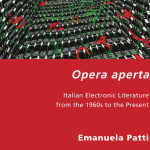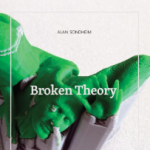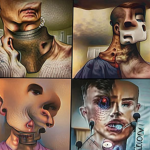electropoetics
Open, but not too much. A review of Emanuela Patti’s Opera aperta. Italian Electronic Literature from the 1960s to the Present

Starting with Umberto Eco's 1962 essay, "Opera aperta," and progressing into Emanuela Patti's tentative forays into Italian Electronic Literature from the 1960s to the Present, Roberta Iadevaia nicely locates a trajectory for Italian e-Lit, albeit one that is still open, "in contention," without any "encyclopedic guarantee, and no single world order on which our imaginative projections can rest."
‘More of a performer than a listener’: Reading Hazel Smith’s Ecliptical

In this substantial and original analysis (which is more a review essay than a simple review) Joy Wallace further extends a series of five reflective pieces on the renowned Australian poet, performer, and multimedia writer, Hazel Smith.
A Loving Screed for Jeremy Hight

In this in memoriam, Patrick Lichty remembers community member and artist, the late Jeremy Hight. We at EBR remember Jeremy fondly. His creative works will continue to be respected for the contributions they make to e-literature.
Review of Broken Theory by Alan Sondheim

In his review of Broken Theory by new media artist and theorist Alan Sondheim, Aden Evens traces Sondheim's eclectic and stylistic meditations on the limits of philosophy, language, and code, expressed through the author's experimental art and research projects. Sondheim's fragmentary monograph and Evens' review by extension explore the inevitability of failure as an 'ontological guarantee' and suggest writing as a necessary—albeit inadequate and unfulfilling—response.
Weirding Winona: iDMAa 2022 Weird Media Exhibition

Melinda M. White's itinerary through the iDMA 2022 Weird Media Exhibition in Winona consider the various forms of weirdness or strangeness evoked by the exhibited works. She explores how strangeness characterises human relationship to constantly transforming technologies, how it manifests itself in our difficult pasts, and how it points to alternative of unexpected futures. While the weird encounters with the exhibition works in no way point to a single, unifying thread or approach to the theme, White's account reveals shared concerns, tendencies, and connections among them. Temporal distance and experiences of loss render familiar technologies, objects, or places unfamiliar; the borders between human and non-human entities and perspectives is blurred or even discarded; humor and surreal irreverence are employed to raise urgent questions on ecology, ethics, and individual or collective narratives and subjectivities.